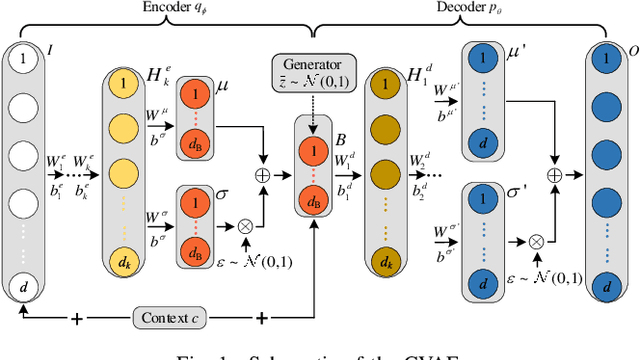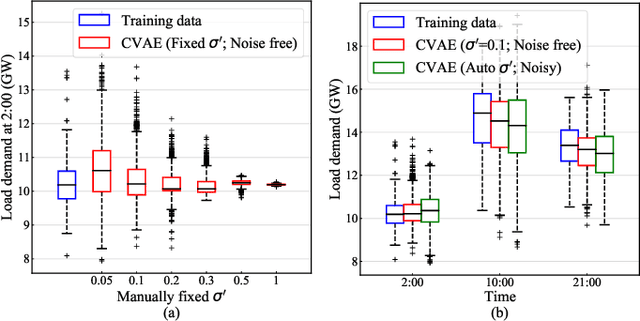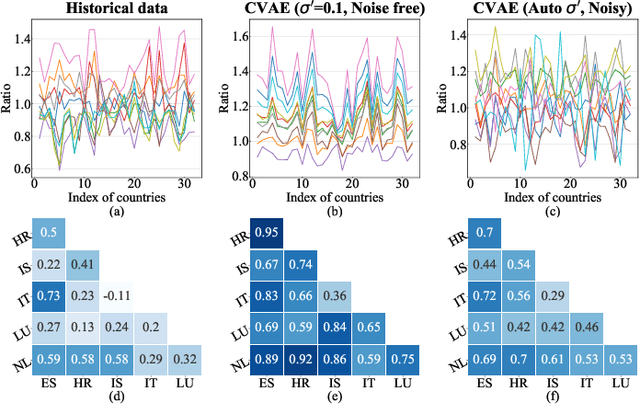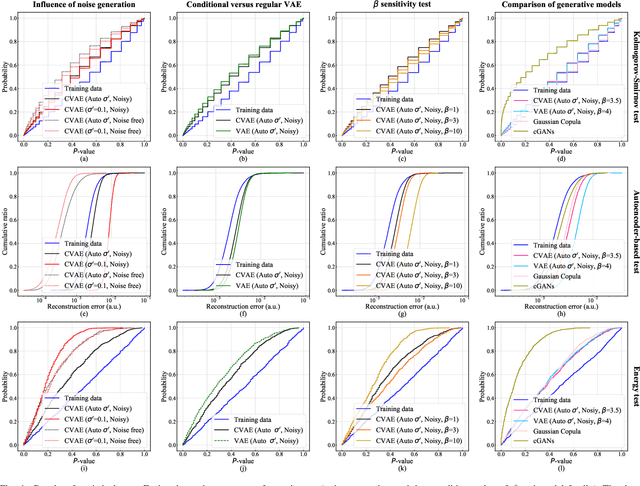Ensieh Sharifnia
Targeted Analysis of High-Risk States Using an Oriented Variational Autoencoder
Mar 20, 2023Abstract:Variational autoencoder (VAE) neural networks can be trained to generate power system states that capture both marginal distribution and multivariate dependencies of historical data. The coordinates of the latent space codes of VAEs have been shown to correlate with conceptual features of the data, which can be leveraged to synthesize targeted data with desired features. However, the locations of the VAEs' latent space codes that correspond to specific properties are not constrained. Additionally, the generation of data with specific characteristics may require data with corresponding hard-to-get labels fed into the generative model for training. In this paper, to make data generation more controllable and efficient, an oriented variation autoencoder (OVAE) is proposed to constrain the link between latent space code and generated data in the form of a Spearman correlation, which provides increased control over the data synthesis process. On this basis, an importance sampling process is used to sample data in the latent space. Two cases are considered for testing the performance of the OVAE model: the data set is fully labeled with approximate information and the data set is incompletely labeled but with more accurate information. The experimental results show that, in both cases, the OVAE model correlates latent space codes with the generated data, and the efficiency of generating targeted samples is significantly improved.
Generating Multivariate Load States Using a Conditional Variational Autoencoder
Oct 21, 2021



Abstract:For planning of power systems and for the calibration of operational tools, it is essential to analyse system performance in a large range of representative scenarios. When the available historical data is limited, generative models are a promising solution, but modelling high-dimensional dependencies is challenging. In this paper, a multivariate load state generating model on the basis of a conditional variational autoencoder (CVAE) neural network is proposed. Going beyond common CVAE implementations, the model includes stochastic variation of output samples under given latent vectors and co-optimizes the parameters for this output variability. It is shown that this improves statistical properties of the generated data. The quality of generated multivariate loads is evaluated using univariate and multivariate performance metrics. A generation adequacy case study on the European network is used to illustrate model's ability to generate realistic tail distributions. The experiments demonstrate that the proposed generator outperforms other data generating mechanisms.
 Add to Chrome
Add to Chrome Add to Firefox
Add to Firefox Add to Edge
Add to Edge